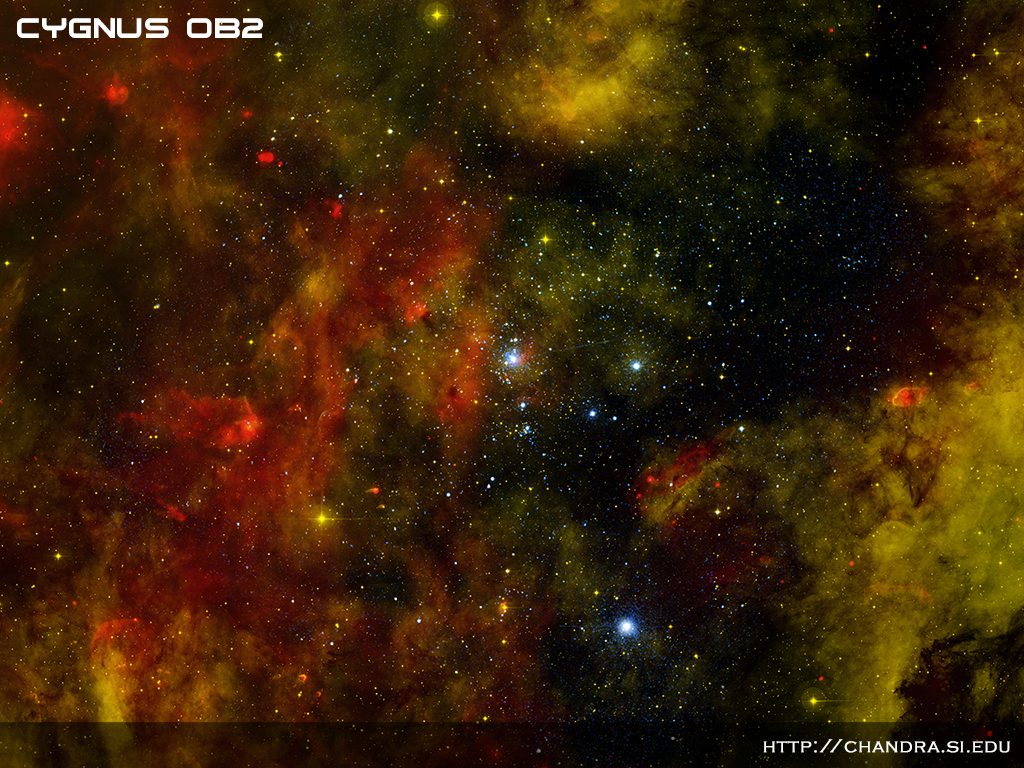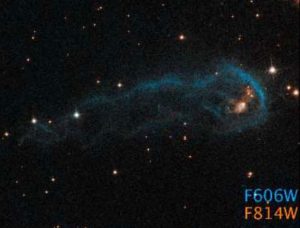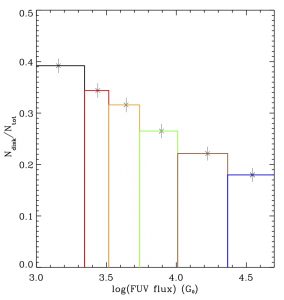Scientific Projects
• The Chandra Cygnus OB2 Legacy Project
1Cygnus OB2 is the closest (1.4 kpc) massive young (1-5 Myrs) stellar association. With thousands low mass stars in different evolutionary status (from young embedded sources to more evolved disk-less pre-main sequence stars) and hundreds massive stars (the known population of O stars counts 125 stars), Cygnus OB2 is the best available target to study star formation in massive associations. This motivated the Chandra Cygnus OB2 Legacy Project. This project, led by Jeremy J. Drake of the Harvard-Smithsonian Center for Astrophysics in Cambridge (Massachusetts), is based on a very long set of observations of CygOB2 with Chandra/ACIS-I: a total of 36 pointing arranged in an overlapping matrix in order to achieve almost constant sensitivity in the central region, covering almost one square degree and with a total exposure of 1.08 Msec.
A total of 7924 X-ray sources were observed and validated, among which 5022 candidate members. Together with the 1843 candidate members with a circumstellar disk selected from the analysis of existing IR data, and the known list of massive members, this is the most complete census of members of a massive association ever obtained. The X-ray data have been combined with existing optical and infrared data, producing a deep and photometrically complete catalog of sources in this region, which will allow to:
- Study the physical properties of Cygnus OB2;
- Understand how massive associations such as Cyg OB2 form and evolve, i.e. if their evolution is typical of gravitationally bound systems or that of sparse associations;
- Understand how massive stars regulate the star formation process in the molecular cloud;
- Study how protoplanetary disks evolve and form planets in a massive associations;
- Study the X-ray properties of such a large sample of young stars and the mechanisms for X-ray production in massive stars;
- Study the X-ray activity, if any, in intermediate massive stars;
- Determine the IMF down to low stellar masses, and understand whether the stellar population od such massive associations follow the universal Initial Mass Function;
- Study Cygnus X-3
Scientific products:
The final product of the Chandra Cygnus OB2 Legacy Survey will be a special issue published in the Astrophysical Journal. The outcome of the survey lists so far:
- The paper Wright et al. 2012 focused on the identification of proplyds-like object in Cygnus-OB2
- The optical catalog of the region published by Guarcello et al. 2012, produced with specific observations with OSIRIS@GTC, and available here.
- The list of candidate stars with protoplanetary disks associated with Cygnus OB2, published by Guarcello et al. 2013 and available here.
- The paper Wright et al. 2014, describing the Chandra observations, data analysis and final catalog.
- The analysis of the accretion process and outflow in two proplyds presented by Guarcello et al. 2014.
- The paper Guarcello et al. 2015 describing the complex matching procedure between the X-ray, optical, and infrared catalog and the final catalog.
- The study of Rauw et al. 2015 of the X-ray emission from the massive stars of the association.
- The analysis of the completeness of the survey by Wright et al. 2015.
- The simulations of the uncertainty associated with the stellar parameters estimated by X-ray spectral fit by Albacete-Colombo et al. 2016.
- The study of the impact of the environment in Cygnus OB2 on the evolution of protoplanetary disks by Guarcello et al. 2016.
- The paper Schneider et al. 2016, related to the survey and analyzing the cloud structure and morphology, with a particular focus on pillars and globules, from Herschel data.
- Posters, talks, and contributes to several international conferences and meetings.



